Horvat Midras – Lovely Track with Caves and a Pyramid
Horvat Midras in Adulam Grove offers a short loop trail with beautiful nature and archaeological remains, including a pyramid and caves.
Note: Horvat Midras is part of the Adulam Grove Nature Reserve. In this grove, you can also find Horvat Etri and Horvat Burgin. Moreover, nearby you can visit Beit Guvrin.
Table of Contents
Map
Midras Ruins are located not far from Beit Shemesh, close to Bet Guvrin National Park. There are many excellent trails in this area. And though it is about halfway between Tel Aviv and Jerusalem, meaning it is higher at the hills, it still gets boiling during summer. Thus either come early or better visit during Spring or Autumn.
To get there, enter “Horvat Midras” into the navigation app.
Directions for drivers: Link to Waze and Link to Google Maps
Directions for public transport: Link to Moovit
Interactive map of the area:
Entrance Fee
Free.
Opening Hours
You can visit at any time. Make sure to finish before dark, as there is no illumination along the route (the trail takes about two hours at a slow pace).
Track
It is an easy trail to navigate through. We did not use any maps. I entered “Midras Ruins” into Waze, and we followed signs like this one from the parking.
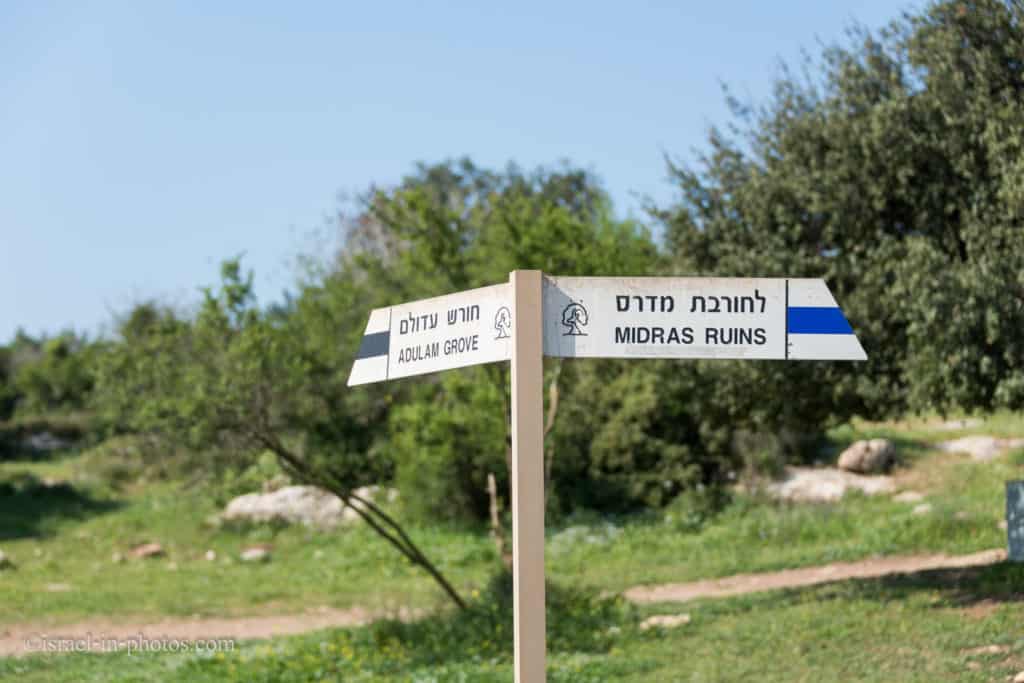
Here is an interactive map from israelhiking.osm.org.il where this trail is marked:
And here are the details of this track:
| Name | Color of the Track on the Map above | Description | Distance (km) | Total climb and descent (meters) | Notes |
|---|---|---|---|---|---|
| Short Loop Track | Blue | The standard round route starts with the blue trail and then switches to the green path leading back. | 1.6 | 94 | You can also walk in the opposite direction. |
At the beginning of the trail, we started climbing a hill. And here we are, looking back towards the parking, just behind the line of trees.
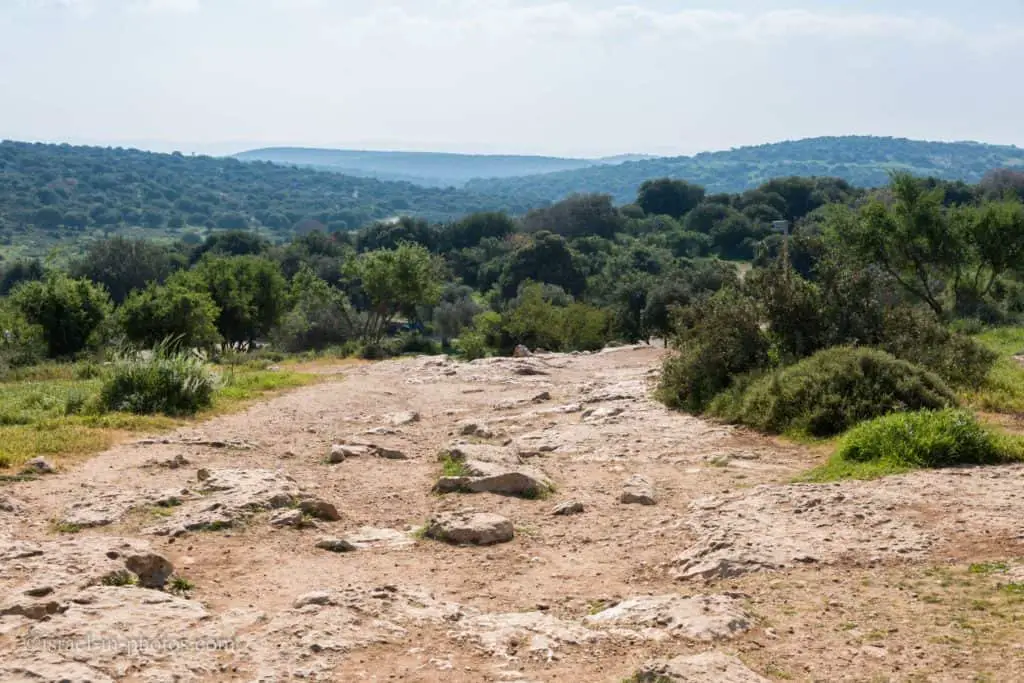
Most of the path has no shade, thus, do not forget water and sunscreen.
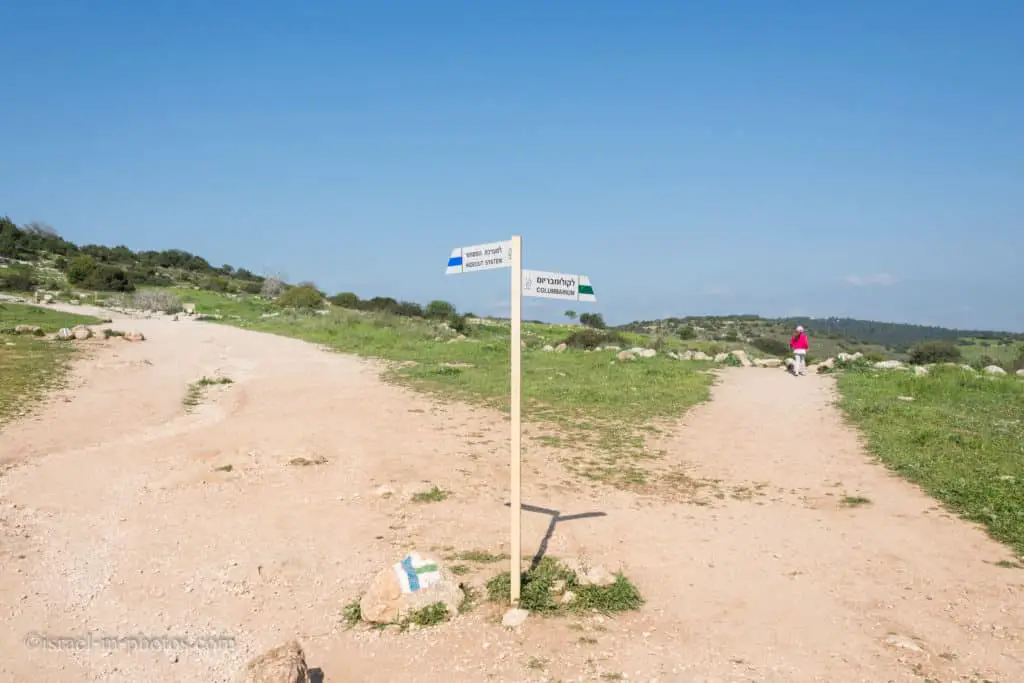
As I mentioned, this is a loop route. We turned left to the hideout system at this sign and returned from the right trail, the columbarium.
Adulam Grove Nature Reserve
Horvat Midras is part of the Adulam Grove Nature Reserve. Adulam Grove Nature Reserve extends over 5,000 dunams.
Different species of animals inhabit this area, including mountain gazelles, striped hyenas, caracals, badgers, and chukars. There are also many songbirds in this area.
The reserve is covered with wildflowers in spring, like orchids, buttercups, anemones, and narcissus. Thus, spring is the best time for a visit.
Along the route, we will see remains of the human settlement from the Second Temple period (third century BCE).
The Refugee Caves
It might not look like something big at a distance, but you will find a vast hidden space when you come closer.
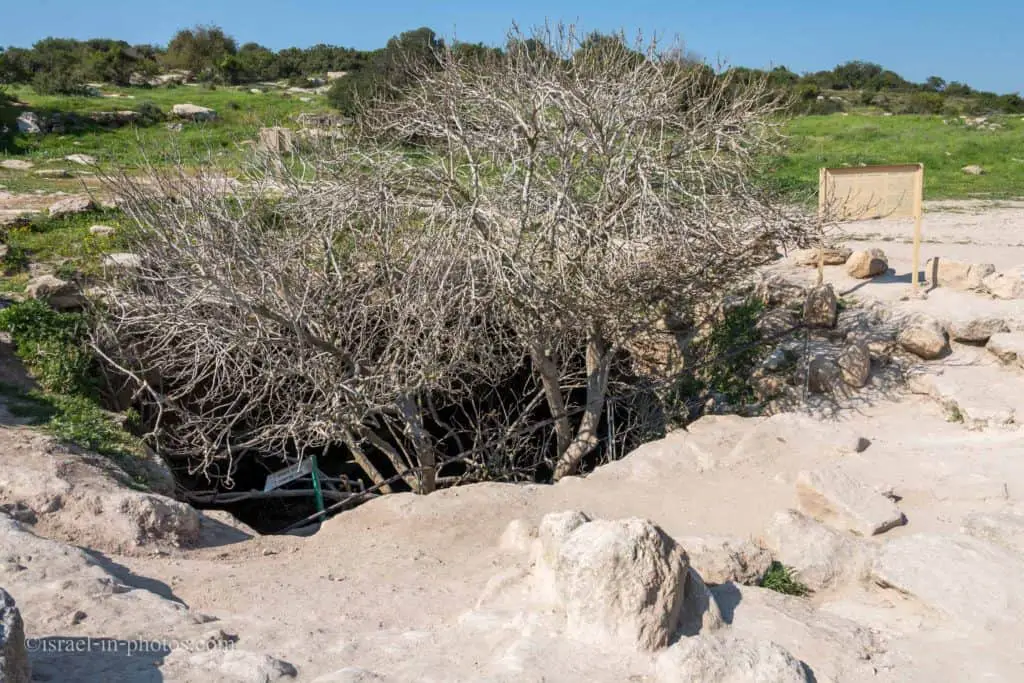
The refugee caves are a system of underground chambers connected by narrow crawl spaces. Dozens of these systems were discovered in the Judean area. Many archeologists believe these caves were created during the Bar Kokhva revolt (132-135 CE). Jewish rebels used the caves as hiding places from the Roman army.
You can take the stairs to the bottom of the cave and see a hole in the left corner. The hole is a small and short tunnel that most kids can enjoy. Bring a flashlight and consider long sleeves shirts if you want to crawl inside.
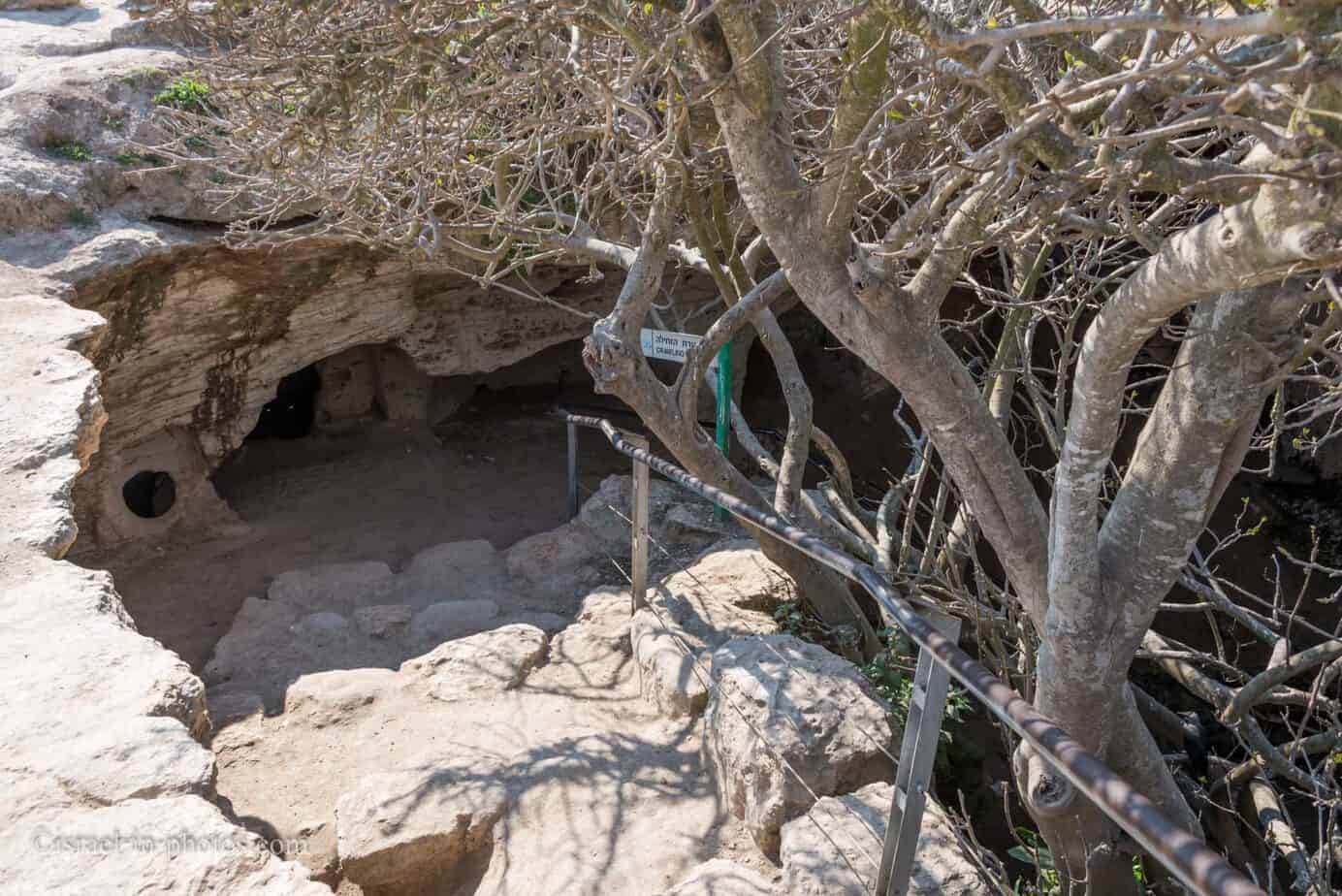
The tree in the refugee cave was home to a group of jackdaws.
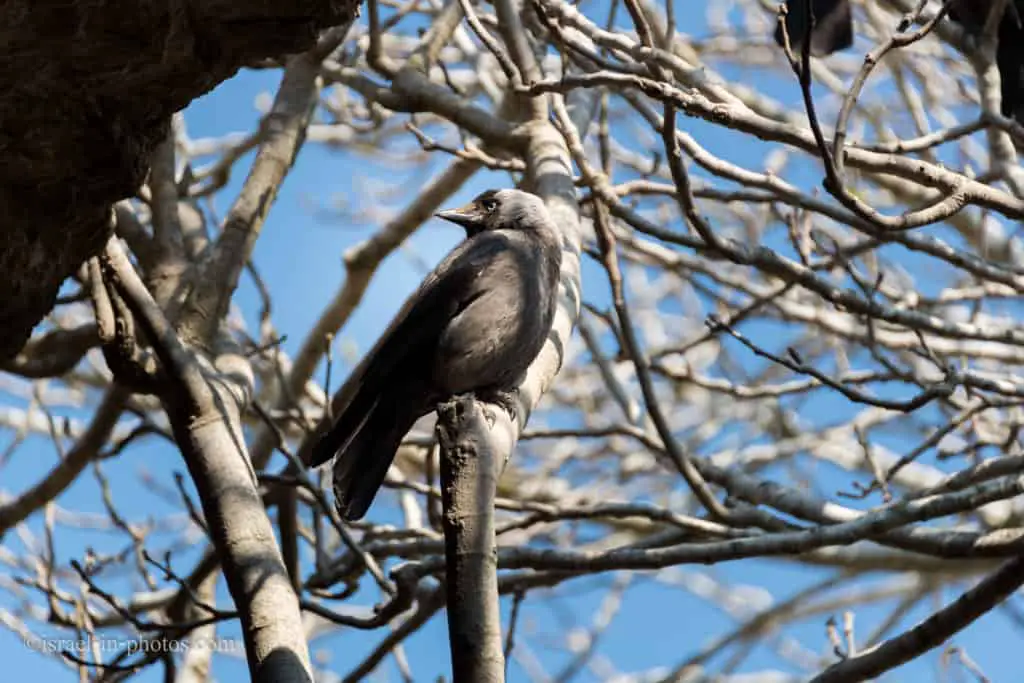
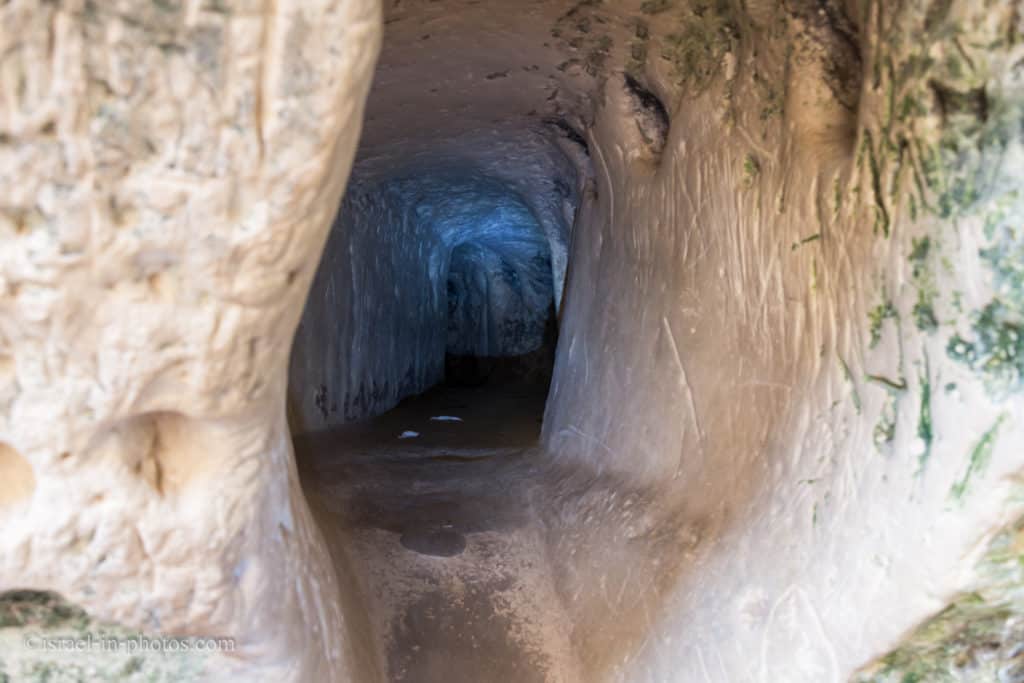
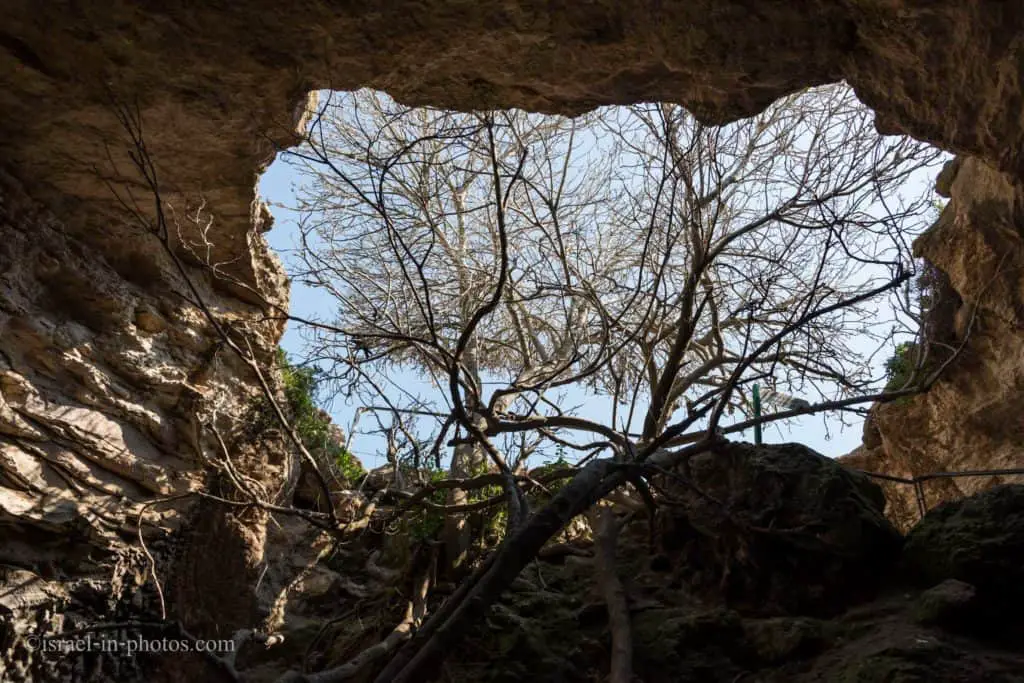
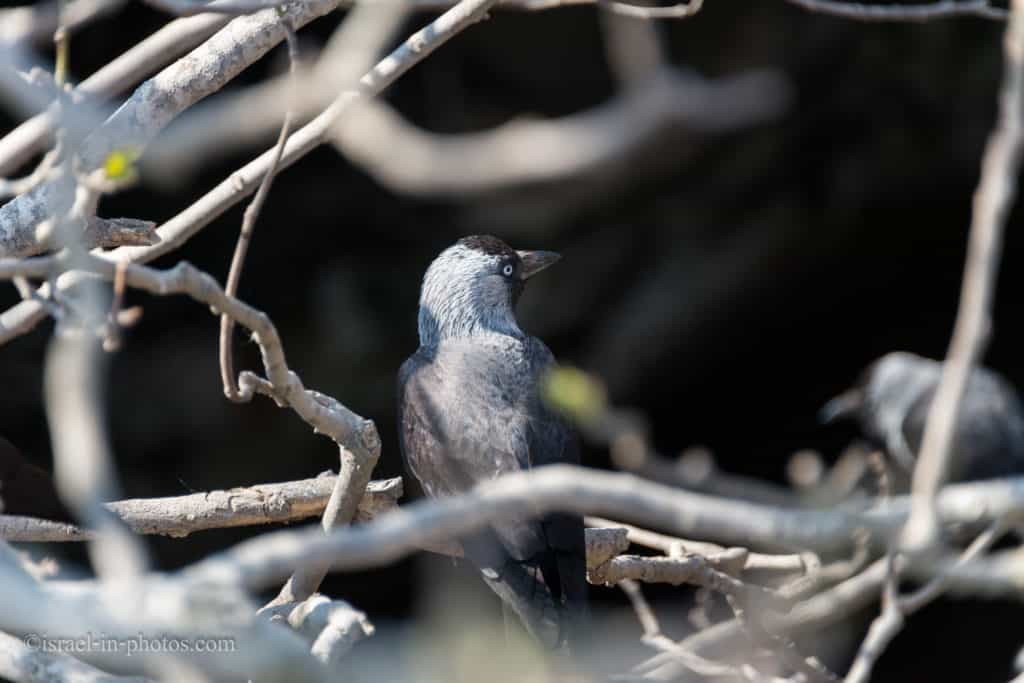
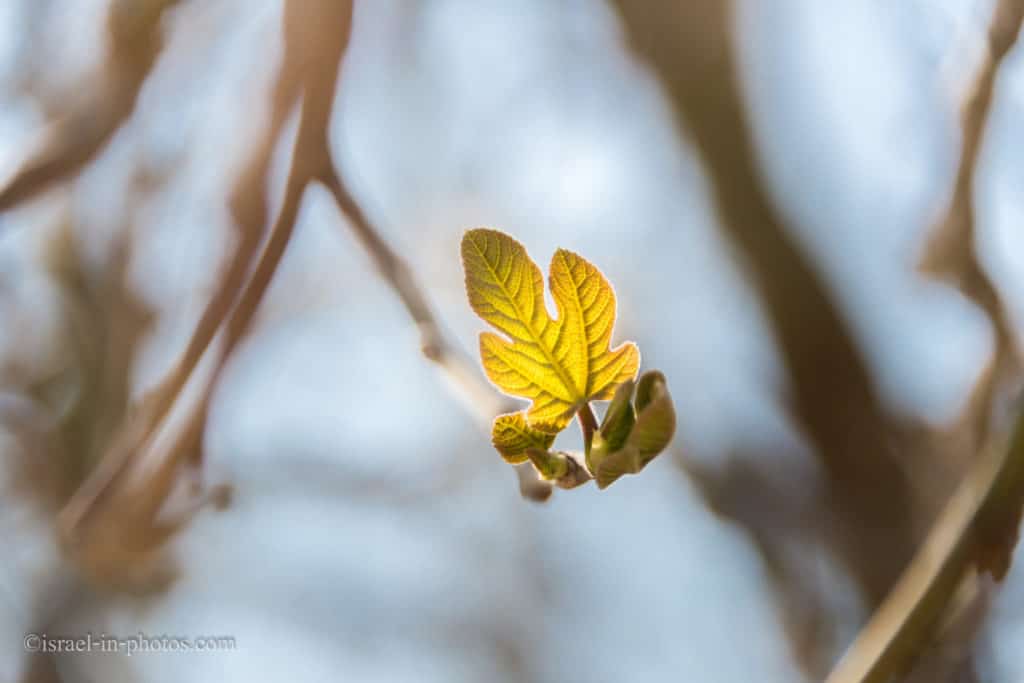

After exploring the cave for fifteen minutes, we continued uphill toward the pyramid.
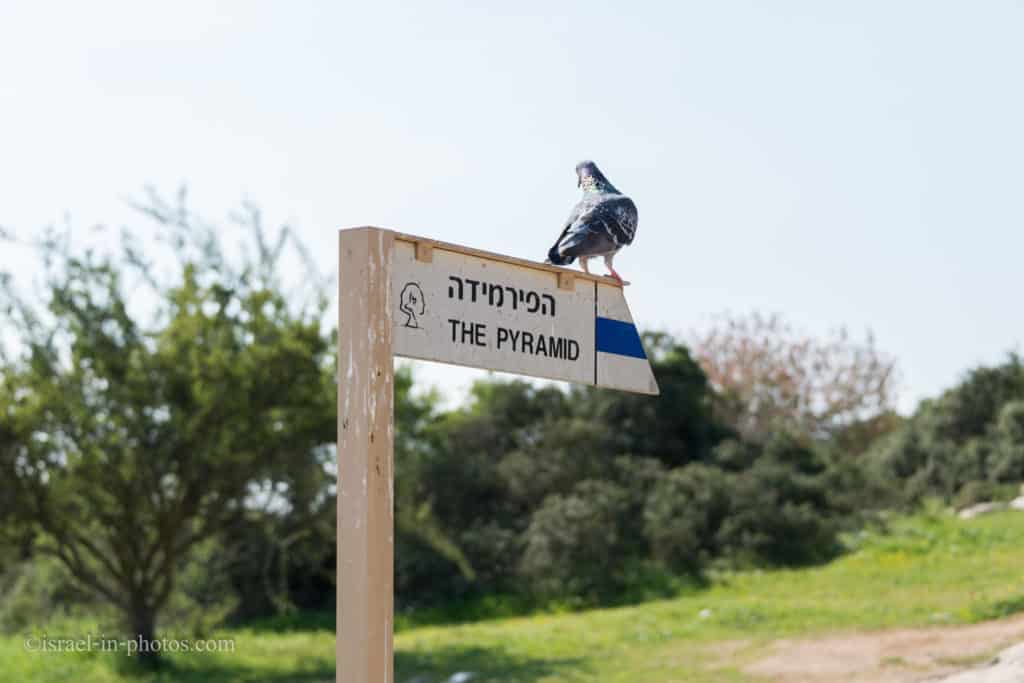
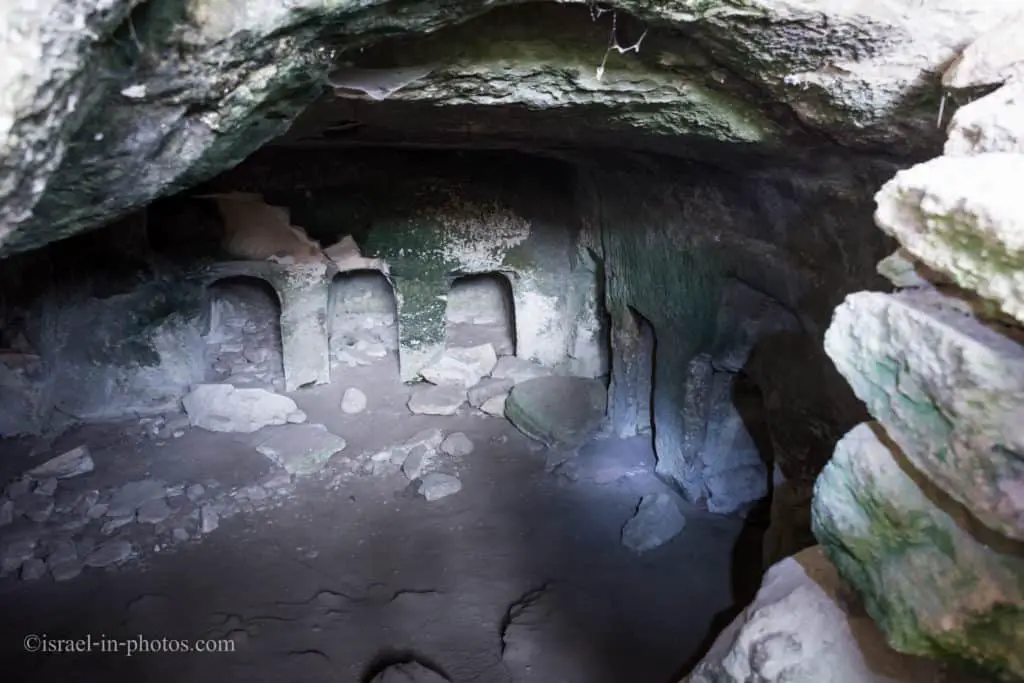
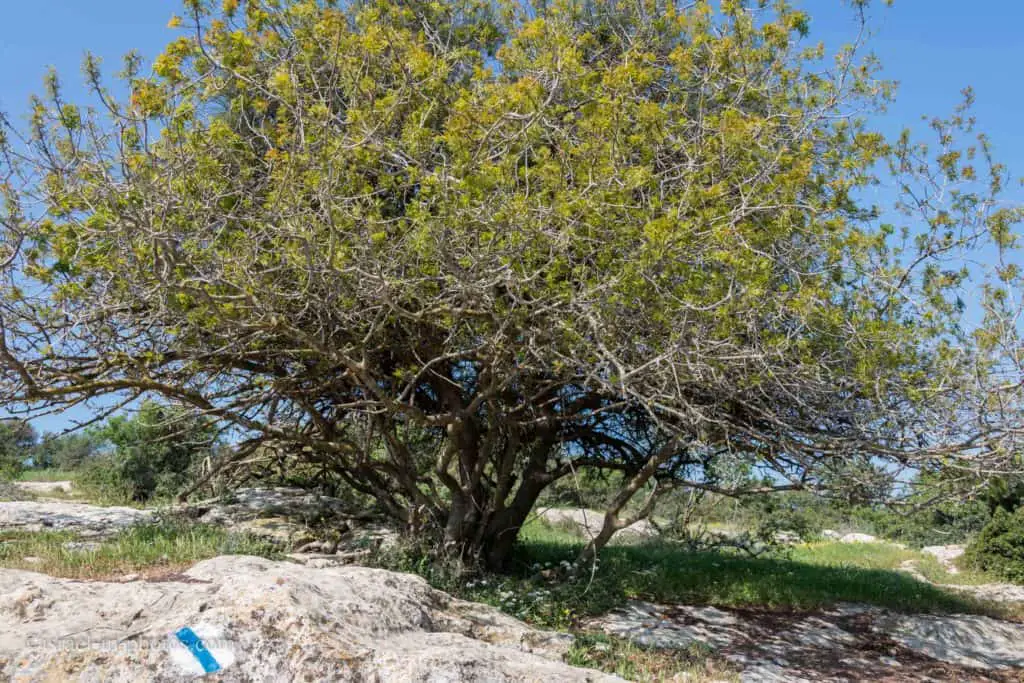
Spring is a good season for a visit. You can read about the weather and when it is best to visit Israel at Events And Festivals By Season.
Here are the flowers we saw on the way.
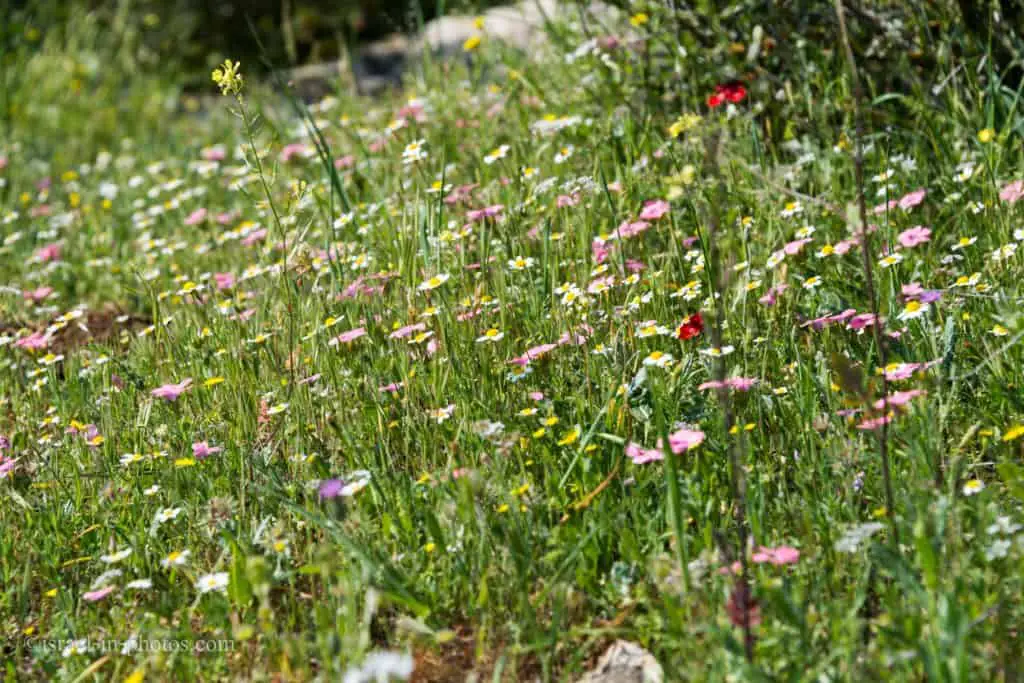
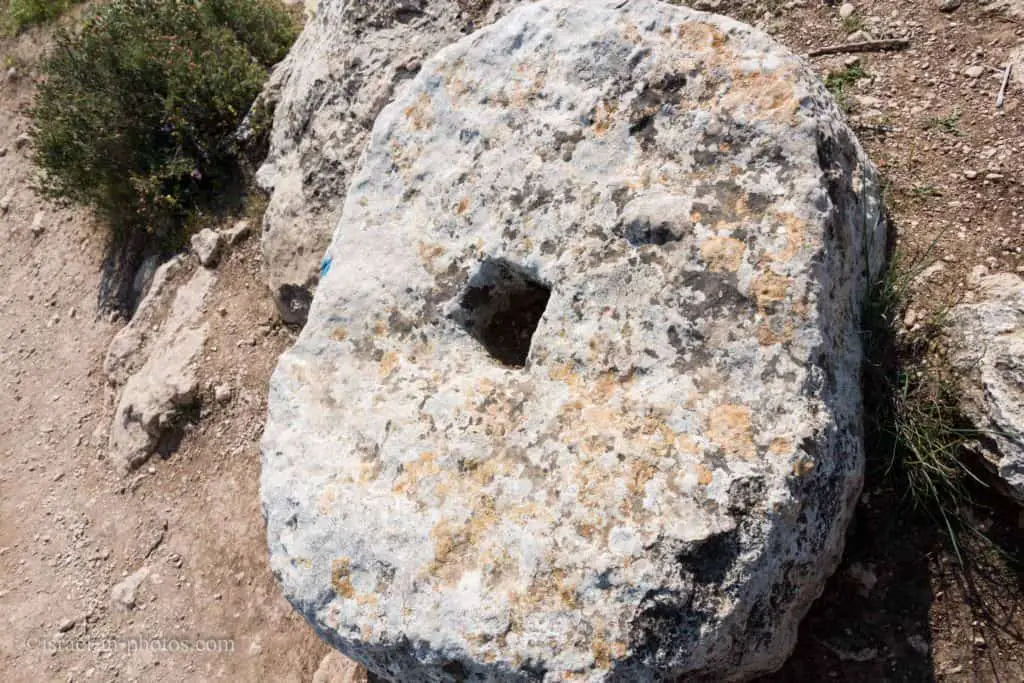
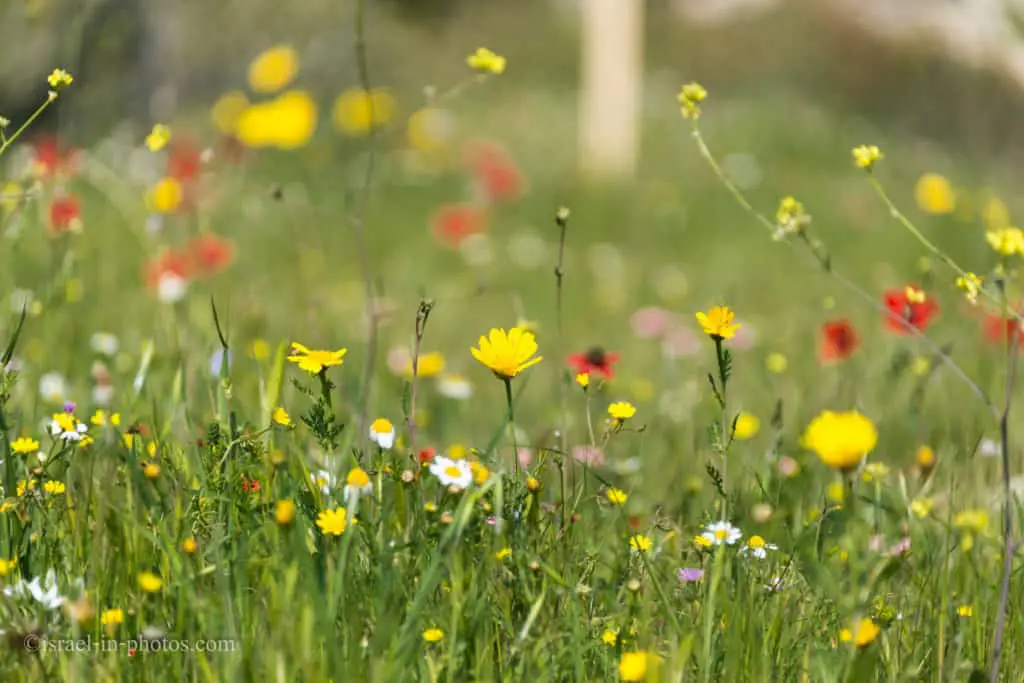
The Pyramid
At the top of the hill, we found a small pyramid.
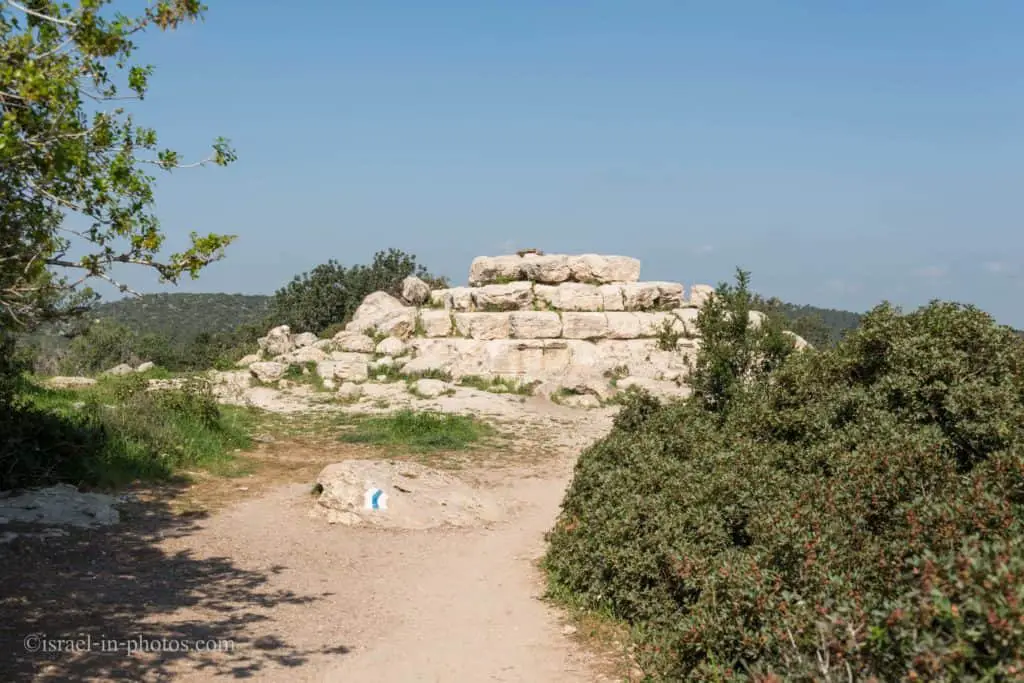
This structure built of dressed stone is the only one in Israel. The base is about ten meters long and is currently 3.5 meters high. The top three rows of stone are missing. Together with the top three rows, the height was around five meters.
The pyramid is located in the ancient village’s cemetery at Midras Ruins and was probably a monument to people buried in the cave below it.
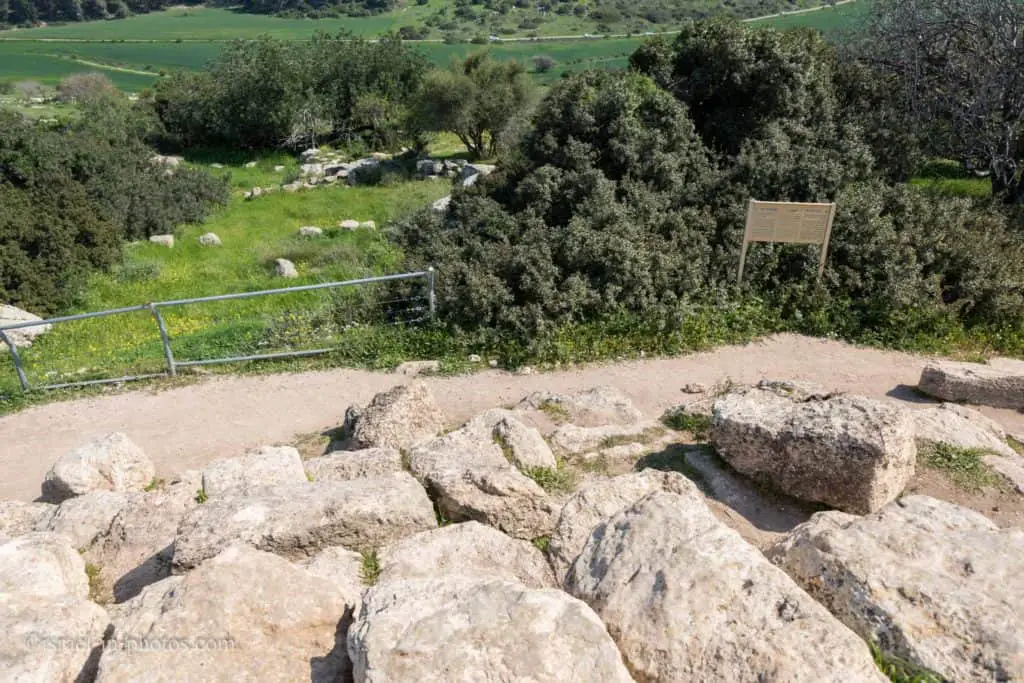
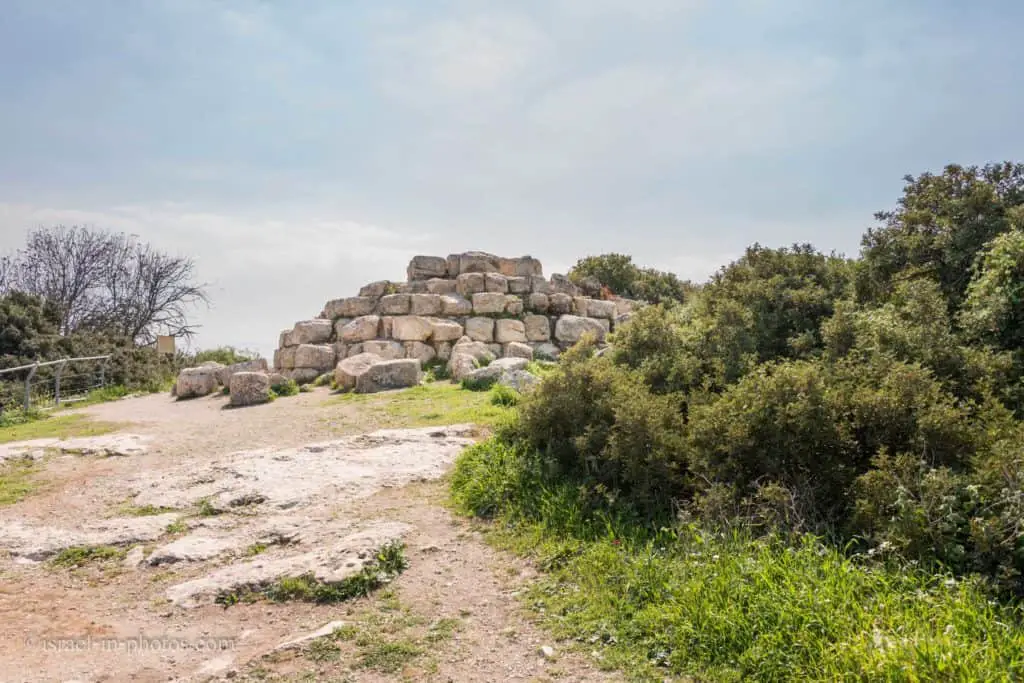
Synagogue
Following a ten-minute walk, we reached the remains of an old synagogue. Next to each point of interest is a sign (in three languages) with a short description. Like this one:

The wall of the beautifully dressed stone suggests it is a public building. And the big rock next to the structure might have been part of a niche for the menorah and Torah scroll. The slot and the closeness to the Jewish burial cave support the theory that this was a synagogue.
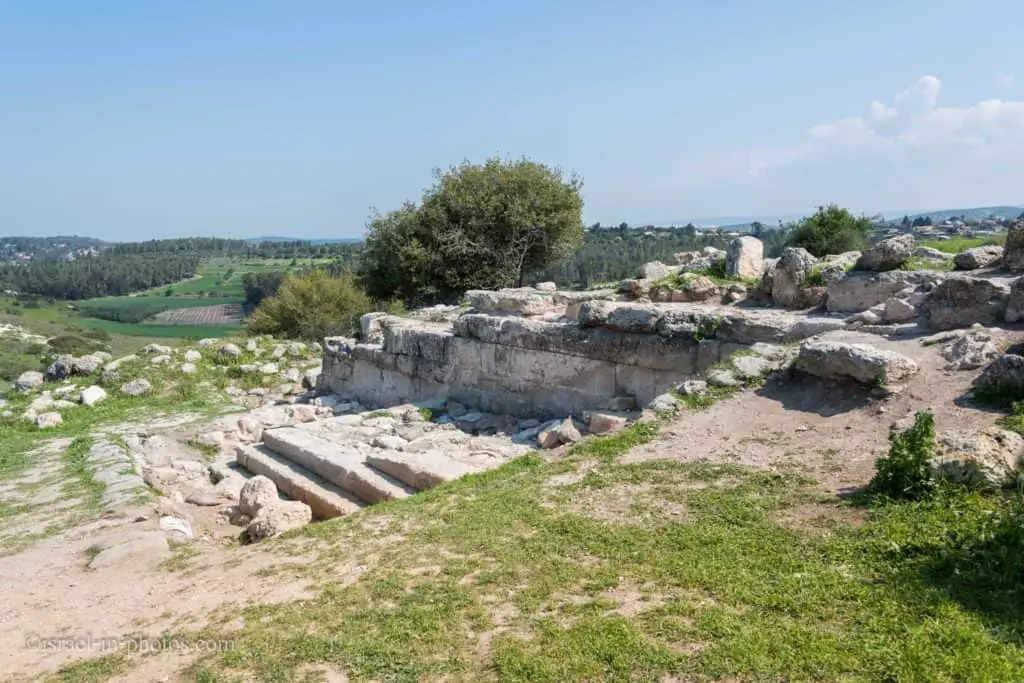

Burial Cave
A large round stone protects the entrance to the burial cave. The rolling stone is a remnant of the great burial cave. So maybe the rock we saw earlier was not a milling one.
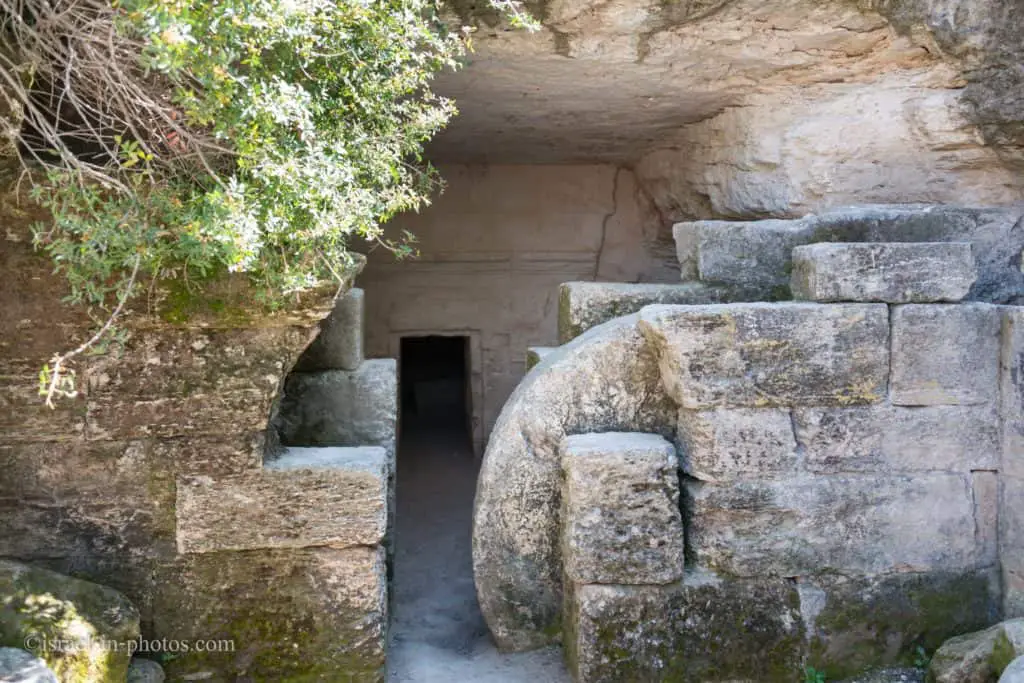
The sherd discovered in the cave indicates that it was used from the end of the first century CE until the Bar Kokhba revolt.
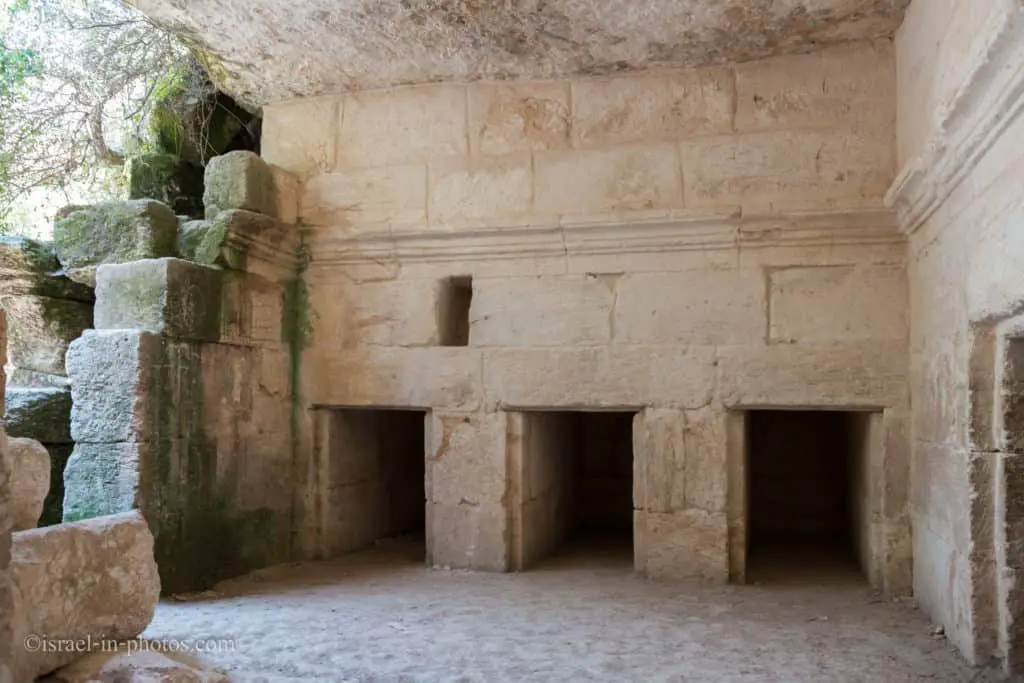
After this cave, we switched to the trail with green markings leading us back to the parking.
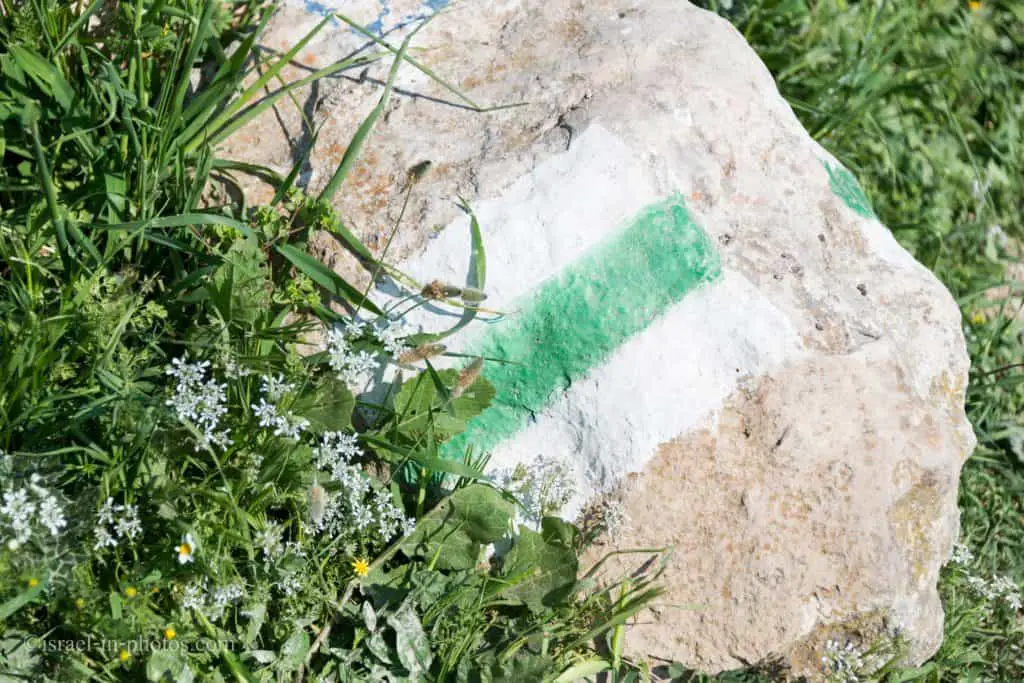
The Columbarium Cave
Here you can see the entrance to the columbarium.
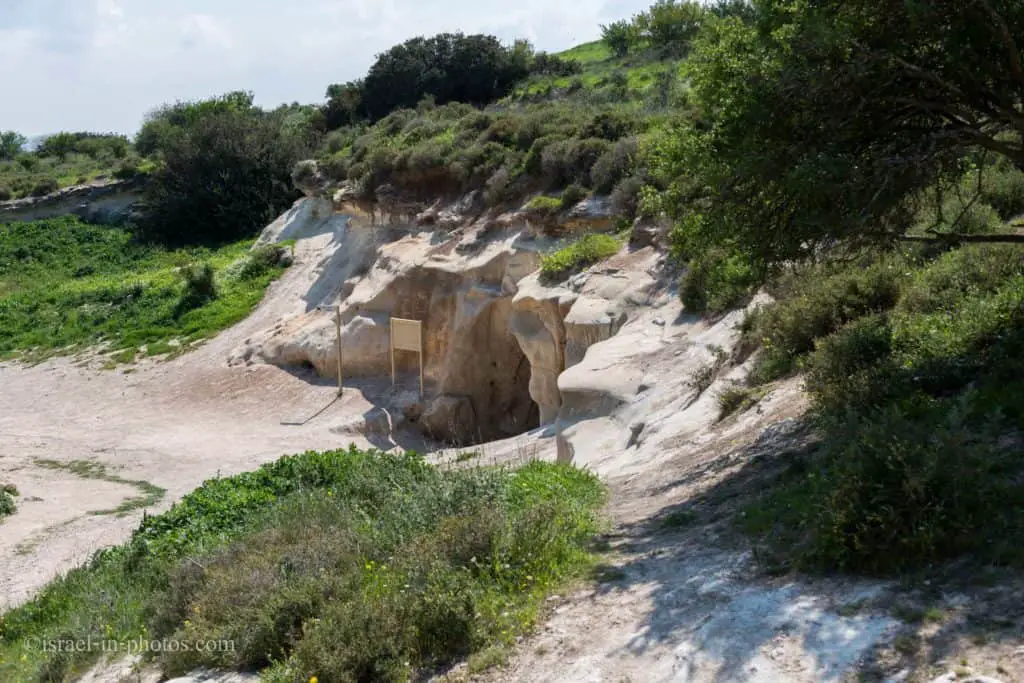
Hundreds of Columbarium caves were found in this area. Usually close to ancient settlements.

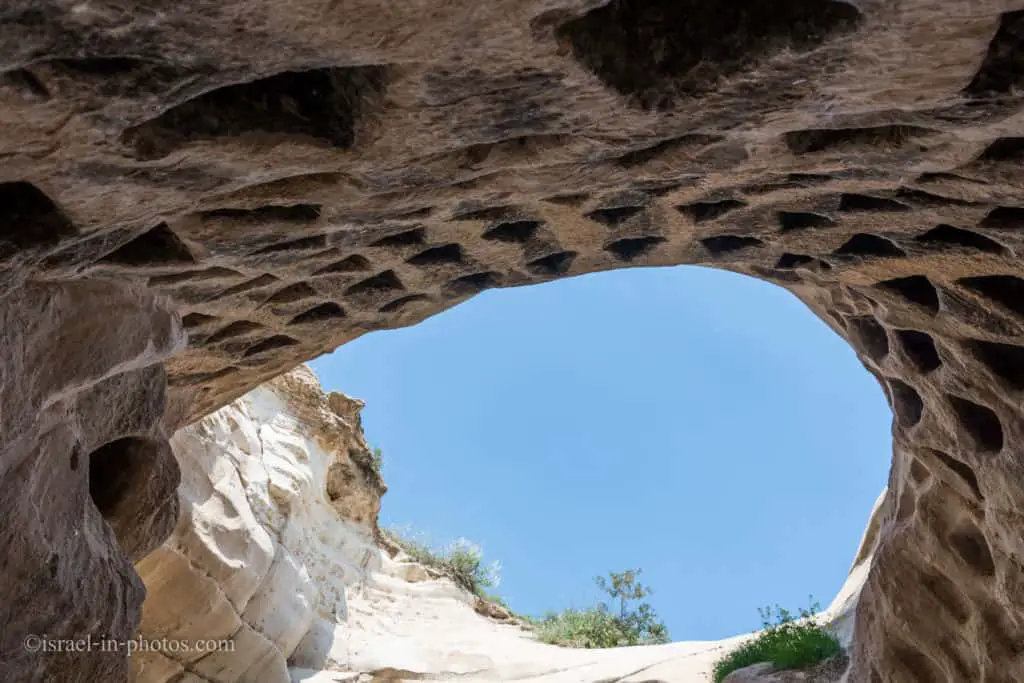
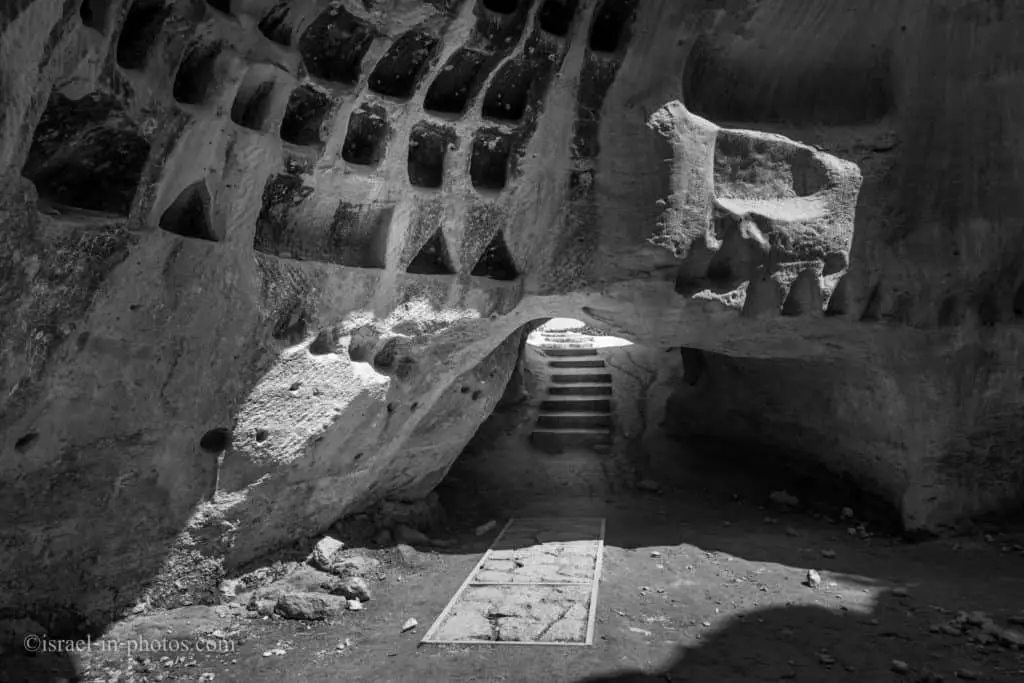
Dozens of small niches, ranging from 15 to 25 cm, were carved into the columbarium walls.
Scholars believe that doves were raised for food. Their dung was used as fertilizer. Also, some think that doves could serve for message passing and rituals.
We exited the columbarium and headed back towards the parking lot. Towards the end of the path, around noon, many people were on the trail.
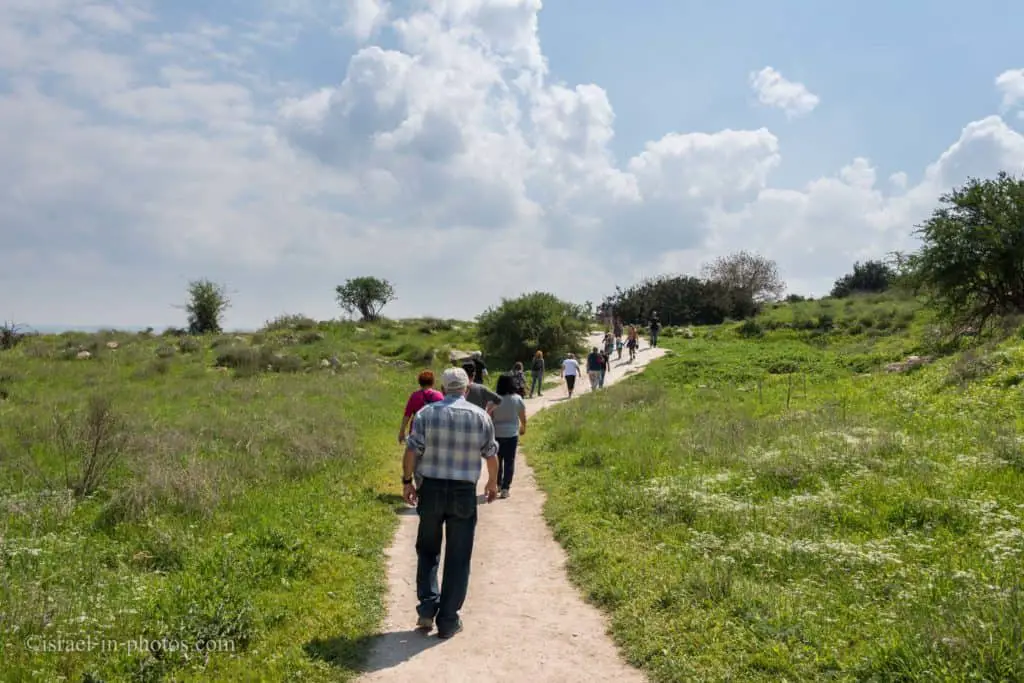
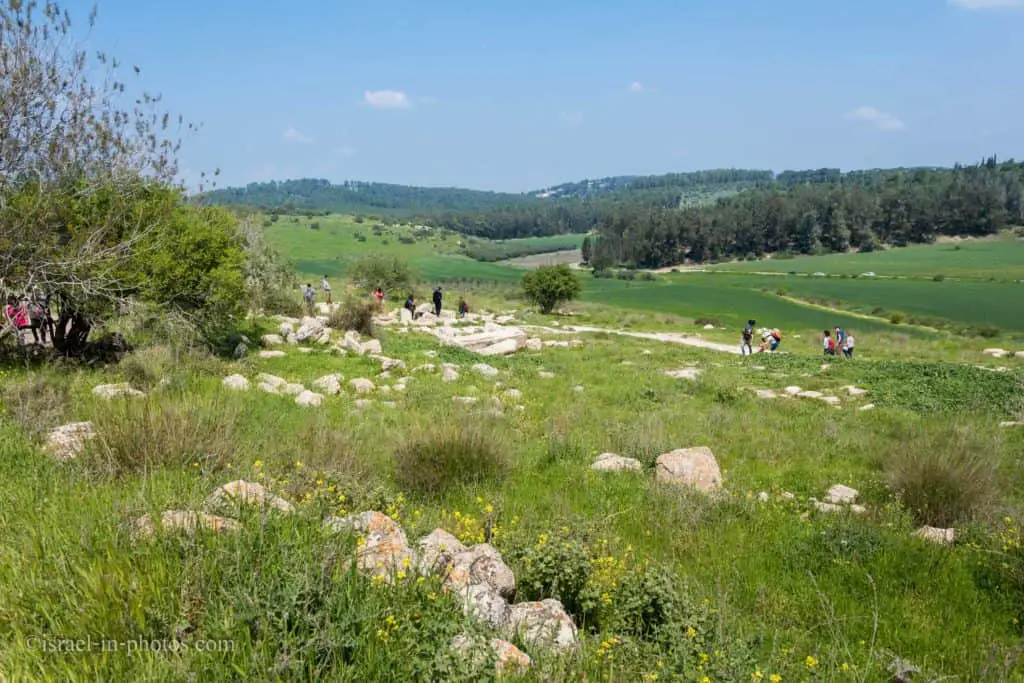
The Midras Ruins trail is not a long one. It took us about two hours to complete the path. And at a faster pace (no photography and food stops), you can finish it in about an hour. After the trail, you can find tables in the nearby forest for a short picnic. Just like we did.
Summary
Horvat Midras is a lovely loop track that both kids and adults will enjoy. There is a lot of nature, space for kids to run, and remains to explore. And there are also many points of interest along the way. On many trails, you walk between different points of interest for an hour or more. But at the Midras Ruins trail, you will find archeological remains every ten minutes.
All of the above make it a favorite track among locals, and at some entrances to the caves, we had to wait for a while, but it was worth it.
Beit Guvrin National Park is called “Land Of A Thousand Caves.” But not all caves are located within its territory, and as you saw, some can be found along this route. If you want to see the caves and it is your first visit to this area, I would suggest visiting Beit Guvrin. Otherwise, consider visiting Horvat Midras, Horvat Etri, and Horvat Burgin.
Have you visited Horvat Midras? Tell us in the comment below about your experience.
That’s all for today, and I’ll see you in future travels!
Stay Tuned!
Additional Resources
Here are several resources that I created to help travelers:- Trip Planner with Attractions and Itineraries is the page that will help you create your perfect travel route.
- What is the Best Time to visit Israel? To answer this question, we will consider the weather, prices, holidays, festivals, and more.
- Information and Tips for Tourists to Israel will answer the most common questions tourists have about Israel (including safety, passports, weather, currency, tipping, electricity, and much more).
- Israel National Parks and Nature Reserves include a complete list, top ten, map, tickets (Israel Pass, Matmon, combo), and campsites.
- If you are looking for things to do, here are the pages for Jerusalem, Tel Aviv, Haifa, Sea Of Galilee, Akko (Acre), Eilat, Nazareth, Safed (Tzfat), and Makhtesh Ramon.








there is no way that Israeli people built this. This is a megalithic site. Check out Ageles Rock on YouTube, on his channel, he made vid “Horvat…..Land of Mysteries” with interesting explanations.
Hi Tomi,
Thanks for commenting.
I am very skeptical about the mentioned video. Does this mean that the synagogue is also a megalithic site?
On a serious note, I am open to new ideas, but trusting a random guy on the internet over hundreds of scientists is a long shot. Moreover, it is clear he has never been to the places he talked about (there is no downward slope at the columbarium, and I know because I have been there). And lastly, why should I trust somebody who stole several of my photos and incorporated them in his video without asking for permission or giving credit?
hi Lev
well, about hundreds of scientists..hundreds of them still say that pyramids were build by Egyptians..that’s why we call this forbidden history. one needs to explain how it is possible to have identical marks on stones in the great pyramid in Egypt,Petra,Yangshan quarry in China, Baalbek Libanon,Gornaya shoria Russia, Puma punku Bolivia,Peru….how did ancient people move, lift stones thousands of tones? Today we don’t have the technology to do that. if the great pyramid was built in 25yr how could they do it if in pyramid there are 2,3 million limestone blocks 2m×2m proximity..when you devide 2,3 million with 25yr, you get that Egyptians build one stone block in less than 5min!? 🤣 with copper chisels and stone hammer!? just not possible. and let’s not start with granite that has hardness close to diamond. I am starting to believe(not just me)that there was industrial civilization more than 12,000yr ago all over the earth,(same tool marks)and somehow,great cataclysmic event or something..they were vanished. and about this pyramid in Horvath..why to build something 5m high if you are hiding from Romans? makes no sense. and you don’t have to go to all of these places,there are lot’s of pictures,videos and we have eyes and brain. in this Horvath caves there are identical tool marks like in Baalbek Lebanon,China….like scoops when you take ice cream..but it’s stone?!.. well it’s a lot of mystery around the world. and thank you Lev for allowing me to write here. “never stop asking questions” A.Einstein.